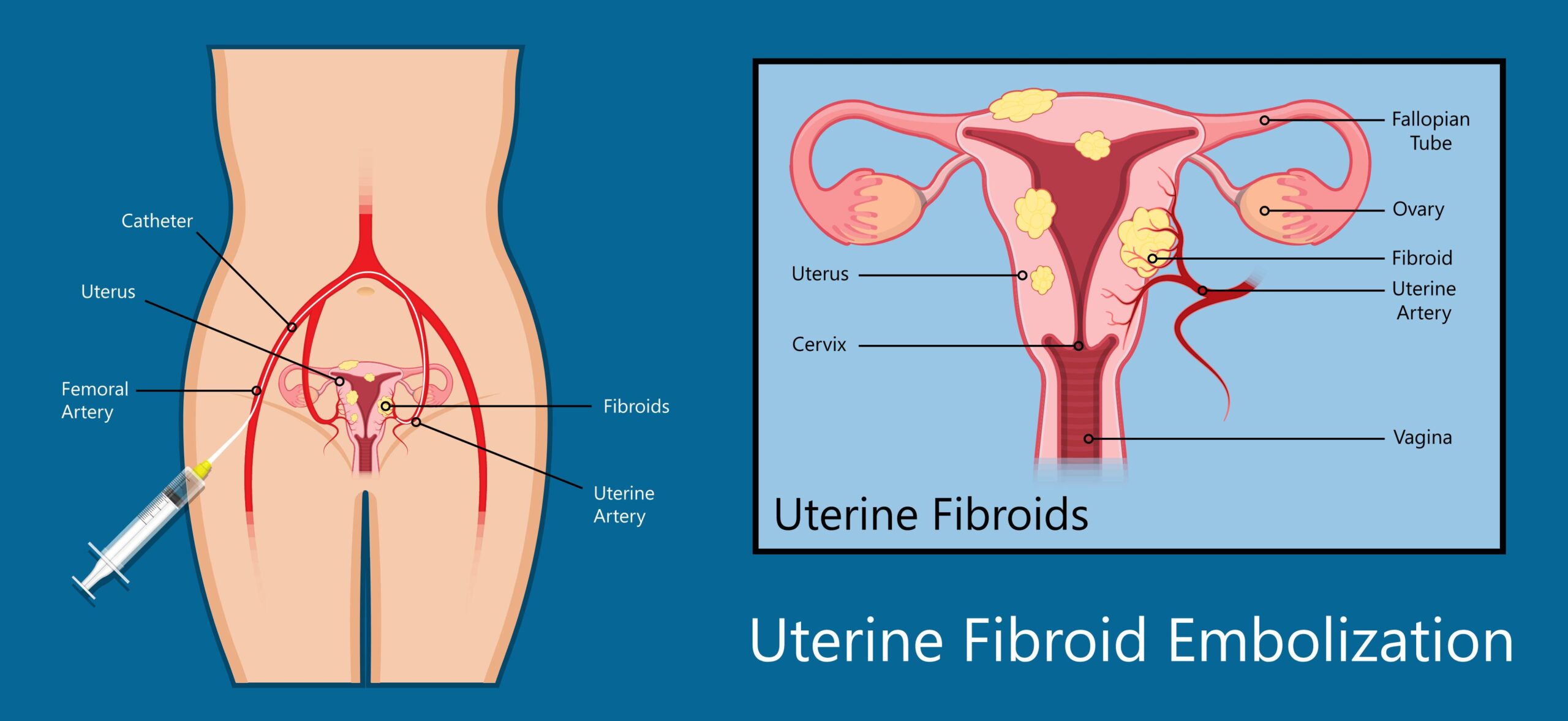WHAT ARE UTERINE FIBROIDS?
Uterine fibroids are noncancerous tumors that grow in the smooth muscle tissue of the uterus. Fibroids can range in size from virtually undetectable to larger than a softball. Up to 40 percent of women develop uterine fibroids at some point in their life, though not all require treatment. The growth pattern of uterine fibroids varies with some growing quickly and some slowly.
SYMPTOMS OF UTERINE FIBROIDS
The symptoms of uterine fibroids depend on the size, the number of fibroids, and the location. Some women will have mild to no symptoms, while other women may experience symptoms severe enough to impact their daily activities and their quality of life. For these women, symptoms can include:
- Heavy menstrual bleeding and/or periods lasting longer than a week
- Breakthrough bleeding
- Pelvic pain and discomfort outside of their menstrual time
- Lower back or upper leg pain
- Frequent need to urinate
- Constipation and/or difficulty emptying bladder
- Discomfort during intercourse
- Fertility complications
RISK FACTORS FOR UTERINE FIBROIDS
All women of reproductive age are at risk for developing fibroids, though African American women are at a higher risk. Having a family history of fibroids, a vitamin D deficiency, or a diet higher in red meat and lower in fruit, dairy, and vegetables may also make fibroids more likely.
HOW DOES UTERINE FIBROID EMBOLIZATION WORK?
Uterine Fibroid Embolization (UFE) is a minimally invasive treatment alternative that can negate the need for a hysterectomy. UFE blocks the blood vessels that supply the uterine fibroid – causing it to shrink. The UFE procedure is performed under conscious sedation, and takes about 1 to 1.5 hours to complete. Once sedated, our interventional radiologist will insert a small catheter through a tiny incision at the top of the thigh. Using imaging guidance and contrast material to highlight the area to be treated, the catheter is guided to the specific arteries that feed the uterine fibroid and small, sand-like particles are injected. The particles block the blood flow to the uterine fibroids causing them shrink and disappear, while the rest of the uterus remains healthy.
AFTER THE UFE PROCEDURE
One of our Interventional Radiologists will interpret your results and advise you whether the procedure was a success. Unlike major surgery, Uterine Fibroid Embolization is an outpatient procedure allowing you to go home the same day after a short recovery time after the procedure. Following the UFE procedure you’ll take it easy with a recovery period of 7-10 days, meaning less pain, less waiting, and a lower cost. Following the UFE, the uterine fibroids continue to shrink and die for several months. By contrast, a hysterectomy requires general anesthesia, a longer hospital stay, and 4-8 weeks of recovery.
During a follow-up visit, your physician may discuss any additional treatment you may need or if you experience any side effects of the procedure.

AM I A CANDIDATE FOR UTERINE FIBROID EMBOLIZATION?
Uterine fibroids are most common among women of childbearing age; African-American women are at higher risk for fibroids. Women with a family history are also more likely to develop fibroids. While fibroids do not always cause symptoms, their size, location or type can lead to problems for some women. If you experience pelvic pain, cramping, heavy menstrual bleeding, the frequent need to urinate, pain during intercourse and fertility problems, you are likely to be a candidate for Uterine Fibroid Embolization.
Women don’t have to choose between going through major surgery to remove their uterus or living in debilitating pain. Minimally invasive options like uterine fibroid embolization can give them the quality of life they deserve. If you’d like to see if uterine fibroid embolization is the right choice for you, reach out. Our expert interventional radiologists are here to help you feel better without the trouble of major surgery.












